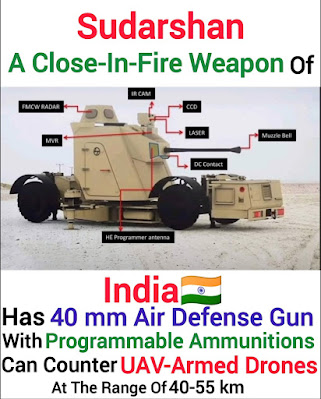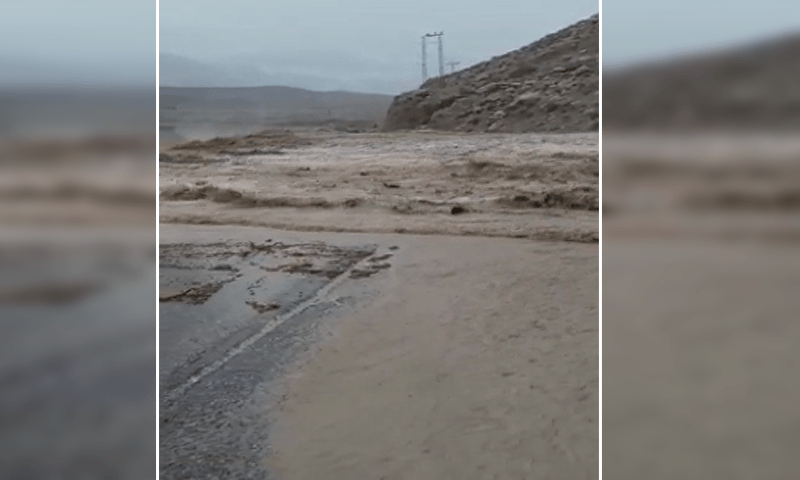Sudarshan: India's close In Weapon system
Sudarshan Close-in Weapon System Protection For Critical Assets with the ability to counter drones or UAVs.
Consists of
🔸Fire Control radar
🔸Search Radar & Command Control Unit
🔸40 mm Air Defence Gun with Programmable Ammunition.
A close-in weapon system is a point-defense weapon system for detecting and destroying short-range incoming missiles and enemy aircraft which have penetrated the outer defenses, typically mounted on a naval ship. Nearly all classes of larger modern warships are equipped with some kind of CIWS device.
There are two types of CIWS systems. A gun-based CIWS usually consists of a combination of radars, computers, and rapid-firing multiple-barrel rotary cannons placed on a rotating turret. Missile-based CIWSs use either infra-red, passive radar/ESM, or semi-active radar terminal guidance to guide missiles to the targeted enemy aircraft or other threats. In some cases, CIWS are used on land to protect military bases. In this case, the CIWS can also protect the base from shell and rocket fire.
A gun-based CIWS usually consists of a combination of radars, computers and rotary or revolver cannon placed on a rotating, automatically aimed gun mount. Examples of gun-based CIWS products in operation are:
AK-630 - 30×165mm caliber
Aselsan GOKDENIZ - 35×228mm
DARDO - 40×365mmR
Denel 35mm Dual Purpose Gun - 35×228mm
Goalkeeper CIWS - 30×173mm
Kashtan CIWS - 30×165mm
Meroka CIWS - 20×128mm
Myriad CIWS - 25×184mm
Rheinmetall Oerlikon Millennium Gun[2][3] - 35×228mm
Phalanx CIWS - 20×102mm
Sea Zenith - 25×184mm
H/PJ-76A CIWS - 37×240mm
Type 730 CIWS - 30×165mm
Type 1130 CIWS - 30×165mm
Pantsir-M - 30×165mm
Limitations of gun systems
Short range: the maximum effective range of gun systems is about 5,000 metres (16,000 ft); systems with lighter projectiles have even shorter range.
The expected real-world kill-distance of an incoming anti-ship missile is about 500 m (1,600 ft) or less,[4] still close enough to cause damage to the ship's sensor or communication arrays, or to wound or kill exposed personnel. Thus some CIWS like Russian Kashtan and Pantsir systems are augmented by installing the close range SAMs on the same mount for increased tactical flexibility.
Limited kill probability: even if the missile is hit and damaged, this may not be enough to destroy it entirely or to alter its course. Even in the case of a direct hit, the missile, or fragments from it may still impact the intended target, particularly if the final interception distance is short. This is especially true if the gun fires kinetic-energy-only projectiles.CIWS are also used on land in the form of C-RAM.
On a smaller scale, active protection systems are used in some tanks (to destroy rocket propelled grenades (RPGs), and several are in development. The Drozd system was deployed on Soviet Naval Infantry tanks in the early 1980s, but later replaced by explosive reactive armour. Other systems that are available or under development are the Russian Arena, Israeli Trophy, American Quick Kill and South African-Swedish LEDS-150.



Comments
Post a Comment